Spring 2022 Newsletter
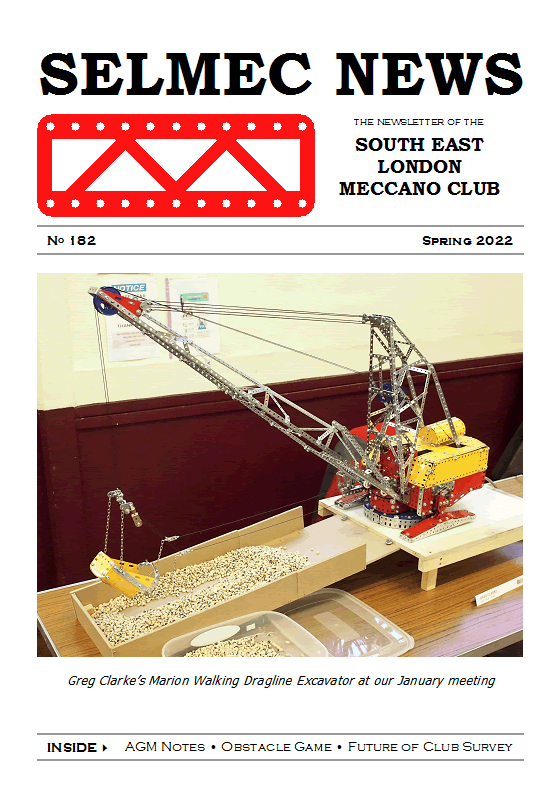
Spring 2022 Newsletter
Issue 182
This was one of our informal quarterly meetings where our members showed off their latest Meccano creations.
At around 2:00pm we had our annual general meeting, followed by the Model Tour in which members were invited to give a short talk about their models — in particular their entries for the Secretary’s Challenge!
Written by Brian Leach
My first ideas for this game go back to 1980, but at the time having a № 9 set plus a few extra parts, this was not going to happen. Forty years later I started on it. I wanted to keep it as mechanical as possible, relying on a minimum of electronics — one electromagnet, four motors and three relays.
In the game you must avoid obstacles as you steer your accelerating car along a moving track.
I’m very happy with it — it worked well and reliably at the 2021 SELMEC Meccano Show.
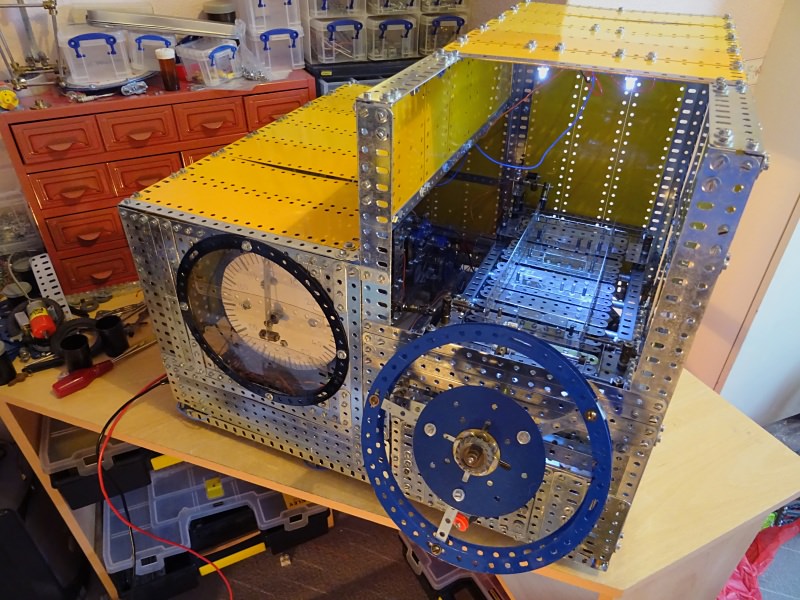
The racing obstacle game with its enclosure in place
The Track
This comprises 54 x 5½” Strips joined to each other by Angle Brackets on the Strips and then lock-nutted Fishplates between the Brackets. Obstacles can be placed on the inner seven holes of the strips. This forms a big caterpillar track and that all goes on ten 2” Pulleys (five each side) and 10” Heavy Duty Bands on two of them and 20” Bands on the other three. There also needs to be idler 1½” Pulleys with Tyres underneath all of the track to reduce friction (there is a lot).
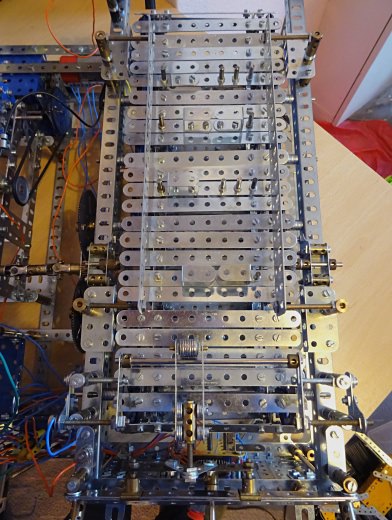
The track, with the car at the bottom
Track Motor and CVT
The motor is a powerful EM1 and a reduction ratio of 20:1 takes it to the continuously variable transmission (CVT). This comprises two cones parallel to each other, but arranged in opposite directions so a 15” Heavy Duty Band gives a variable ratio as it slides across. The ratio is about 2:1 to 1:2 for a four-fold speed change to make the game more difficult as it plays. The 15” Band has a guide which moves it from end to end on a Screwed Rod. The Rod is turned by two motors through a differential. The forward motor is at a low gear ratio and the reset reverse motor at a high gear ratio (about six times faster). Using two motors makes the electronics easy. There are switches at each end to switch off the motor when the guide has moved to its full extent.

The continuously variable transmission
Steering
The car (about eight Pawls Without Boss bolted together) is mounted on a 3½” Rack Strip and the Rack Strip is moved by a 1” Gear on the same rod as the steering wheel. The steering wheel has a friction component to the 1” Gear to avoid it being forced. There is an electronically isolated rod behind the Pawls which are also electrically isolated. When the Pawls are pushed back by an obstacle a latch relay is activated which stops the game.
Scoring
There is one dial turned slowly forward by a motor showing the score. When the game resets an electromagnet activates, disconnecting the motor from the dial. A weight in the mechanism allows it to go back to zero quickly.
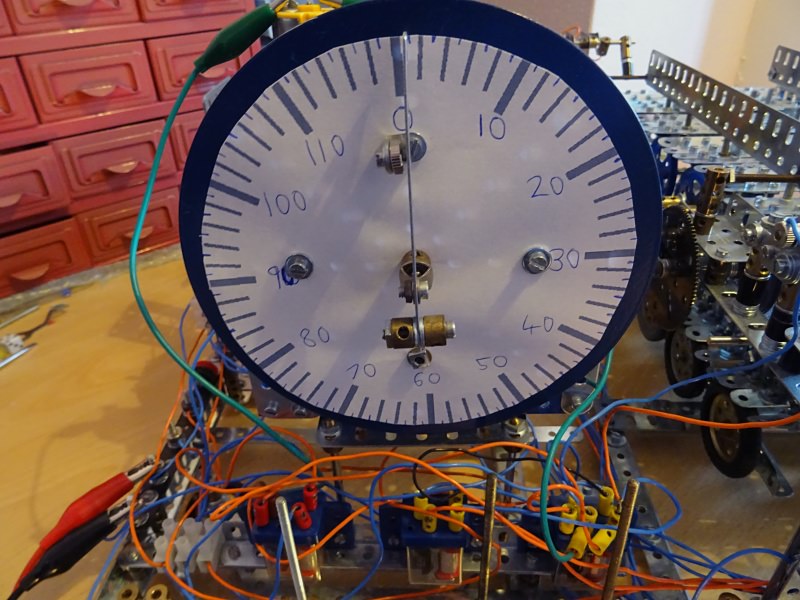
The scoring dial
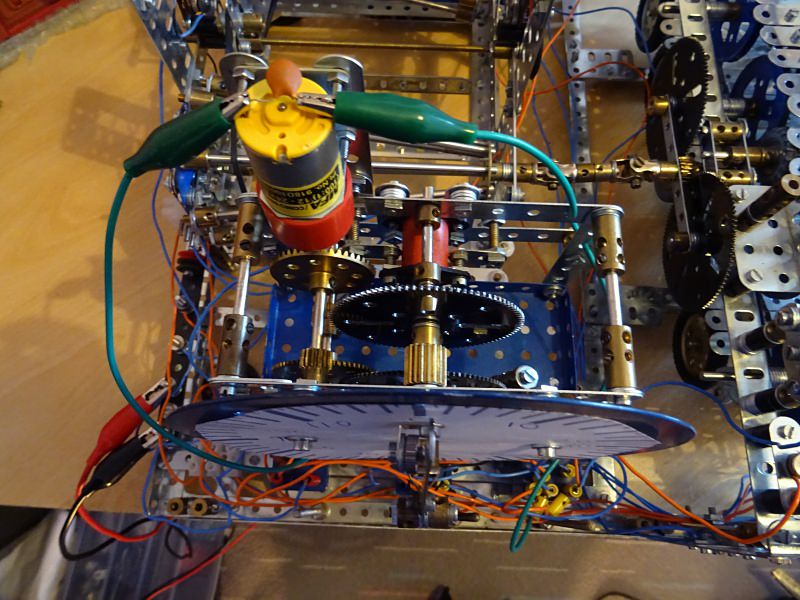
The mechanism behind the scoring dial
Game Reset
We need to get the track to a starting position, get the CVT to its lowest ratio and reset the score. There is a difficulty here that while the CVT is resetting the track motor must be running so the CVT 15” Driving Band can move along the cones. So there is a track stop switch when the track gets to the right place but if the CVT is still rewinding it does not activate. This is done by a relay. The game reset is very slow, sometimes taking a minute or more.
Power
Two power supplies are needed; one for the EM1 running at 3V (easy) or 4.5V (difficult) and the other run at 12V for everything else. A third relay provides control between the circuits.
See more photos and videos of this model.